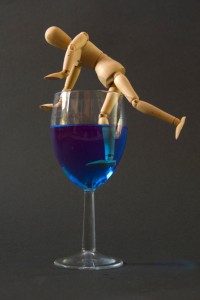 Models of Alcoholism and Drug Addiction: Part Three
Models of Alcoholism and Drug Addiction: Part Three
We’ve talked about how difficult it is to come up with a single effective approach to addictions, and that’s exemplified by the various models that exist. By examining the models through which people view addiction, it’s possible to gain better perspective on society’s reaction to a phenomenon that after all has been around for thousands of years.
In psychoanalytic approaches, addiction is seen as the result of the interplay of psychological forces that operate below the addict’s awareness. At root is a complex, dynamic interaction of Id (instincts, drives, and impulses), Superego (conscience, moralizing), and Ego (our reality-based identity) that becomes part of our personality and repeatedly drives us towards addictive behavior, despite the consequences.
Since Id, Superego, and Ego are abstract intellectual constructs, how can the validity of psychodynamic theory be proved in any objective way? Answer: It can’t. We might demonstrate that it’s helpful to some degree in understanding human behavior, but it remains a conceptual framework, largely free of concrete evidence, and therefore open to challenge.
That very lack of specificity is a reason why psychoanalytic theory can comfortably accommodate seemingly contradictory statements such as: ” …opiate addiction [is] an attempt to deal with intense depression related to feelings of deprivation by seeking a soothing, infantile, symbiotic experience, or… an attempt to seek relief from cruel, harsh, excessively punitive parental standards that create feelings of being unacceptable and worthless, or… a defense against… profound and overwhelming aggressive impulses that could precipitate an underlying psychotic potential.” *
Not exactly easy to measure or prove any of the above, is it? And there’s no reliable way to tell whether addictive personality traits represent a cause or a result of addiction.
Psychodynamic theory did make some valuable contributions to addiction therapy. Our understanding of psychological defenses, for instance. Those unconscious protective responses to anxiety (denial, rationalization, externalizing, etc) that become so prominent.
It’s not hard to see why psychodynamic explanations faded a bit as newer information became available. Still, the next time you hear someone reference an alcoholic’s ‘underlying emotional problems’ — that’s the influence of the psychoanalytic model, still hard at work.
This article is Part Three in a series “Models of Alcoholism and Drug Addiction.” Further articles will explore other models.
*(Psychodynamic theories of opiate addiction: New directions for research – S. Blatt, C. McDonald, A. Sugarman, C. Wilber, Yale Univ. School of Medicine 1984)
Models of Alcoholism and Drug Addiction -More from this series:
- Models of Alcoholism and Drug Addiction
- Models of Addiction: The Medical Model
- Models of Addiction: The Psychoanalytic Model
- Models of Addiction: The Temperance Model
- Models of Addiction: The Moderation Model








